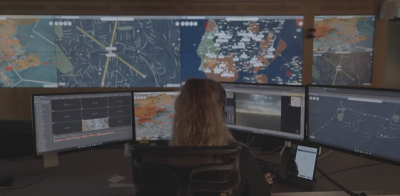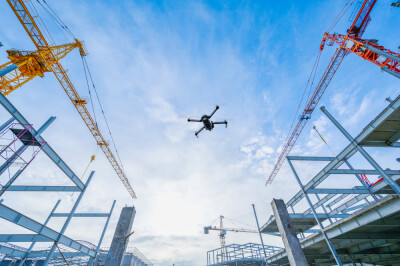On December 5th, Rob Eagles, Director ATM Infrastructure and Céline Hourcade, Head Cargo Transformation of IATA made a presentation at the Global Media Day event in Geneva, Switzerland, in which they acknowledged and reviewed the challenges and opportunities that drones are bringing to the international air cargo industry.
The International Air Transport Association is a trade organization created in 1945 to promote safety and cooperation between airlines. Today IATA has 275 members in 117 countries, and its members are responsible for 83% of total air-traffic in the world. So far, IATA had been relatively silent in regards to the issue of UAVs as well as the inevitable integration of manned and unmanned aircraft in controlled airspace.Mr. Eagles said that there were many safety and security risks emerging as the rapid growth of drones continued, including a higher risk of aircraft accidents and incidents caused by the irresponsible use of an unmanned vehicle and the potential security threat posed by unauthorized use of UAS for malicious purposes.“IATA is actively engaged in education, awareness and the need for regulation for safe, efficient and sustainable operations and has been concentrating on safety, air traffic management (ATM) and integrated operations," said Eagles. "All of these areas are related and we need to make sure operations are safe, appropriate regulation and infrastructure is in place and operations are integrated."The opportunities for savings are too great to ignore. IATA now recognizes the inevitable fact that its members are seriously looking at adding this new powerful tool to their existing operations. The organization is creating a preemptive movement to be ready when they do.“Under the ATM work area, in collaboration with ICAO (International Civil Aviation Organization), IATA is working to ensure drones operate within the existing airspace structures safely and without negatively impacting on the capacity and efficiency of manned aircraft," Eagles continued. "Along with new standards and regulations, new airspace areas need to be defined, in particular below 500 feet and above 60,000 feet."“If regulated and operated correctly and safely, unmanned vehicle technologies can revolutionize future air transport, airport operations, cargo operations and ground handling, besides others," Mrs. Hourcade mentioned during her presentation.“UAVs offer new thinking methodology and opportunities to reshape the future for all airspace users, manned or unmanned," Eagles mentioned. "We just need to ensure that it is done safely and efficiently."Long-term, it is foreseeable that unmanned aircraft will be used to transport passengers as well. From flying cars & taxis under development by automotive manufacturers and companies like UBER, to wide-body passenger aircraft with no pilot on board. The question is probably not if anymore, but when? Because of this, IATA’s challenge now is to facilitate this new branch of aviation by developing standards to support safe, efficient, orderly, reliable and sustainable drone operations into the airspace system.“This is our mandate. Because our mission is to represent, lead and serve the airline industry,” Eagles concluded.This is great news for the UAV industry as it is recognition, by the largest civil aviation organization in the world, that integration of manned and unmanned aircraft in controlled airspace is inevitable and we might as well start working together and fast to ensure safe skies for everyone.Subscribe
The information you submit will be stored and used to communicate with you about your interest in Commercial UAV News. To understand more about how we use and store information, please refer to our privacy policy.
December 7, 2017
IATA Takes a Formal Position into the Issue of Drones Integration into Airspace















Comments